Scientific name
Tetrastichus schoenobii Ferriere
Taxonomic position
Hymenoptera: Chalcidoidea: Eulophidae: Tetrastichinae
Description
Body bright metallic blue-green or shining green with bluish lustre. Antenna brown except
for yellowish scape, 8-segmented with three-segmented funicle and club, scape not reaching front ocellus. In female, funicle with all three segments equally long; in male, funicle four-segmented, I segment shorter than rest, scape with a narrow and elongate sensory organ, nearly as long as scape. Mesoscutum with well developed notaular lines, median furrow very weak, nearly obliterated anteriorly. Scutellum with a pair of conspicuous submedian lines / furrows. Submarginal vein of fore wing with a single seta. Abdomen elongate oval, apically pointed in female, not broader than mesosoma (thorax), ovipositor only
slightly exserted. Legs more or less yellowish, except base of anterior coxae and hind coxae dark green, tarsal apices brownish; tarsi four-segmented in all pairs of legs. Propodeal spiracle bound by an inverted Y-shaped carina.
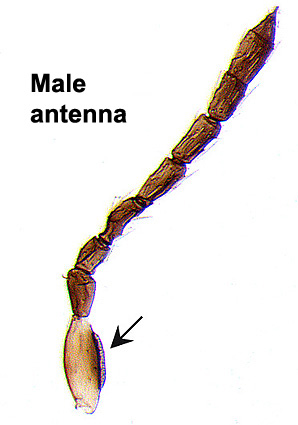

 Thorax Thorax
Images
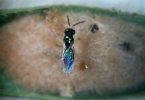 Adult female on yellow stem borer eggmass
Adult female on yellow stem borer eggmass
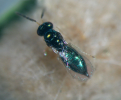 Adult female, dorsal view Adult female, dorsal view

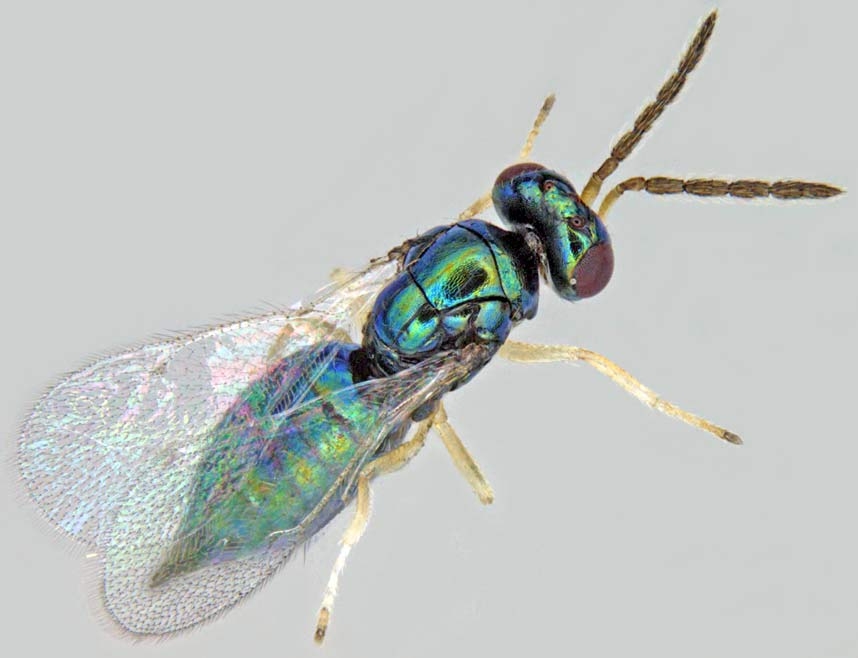 Adult, dorsal view
Adult, dorsal view
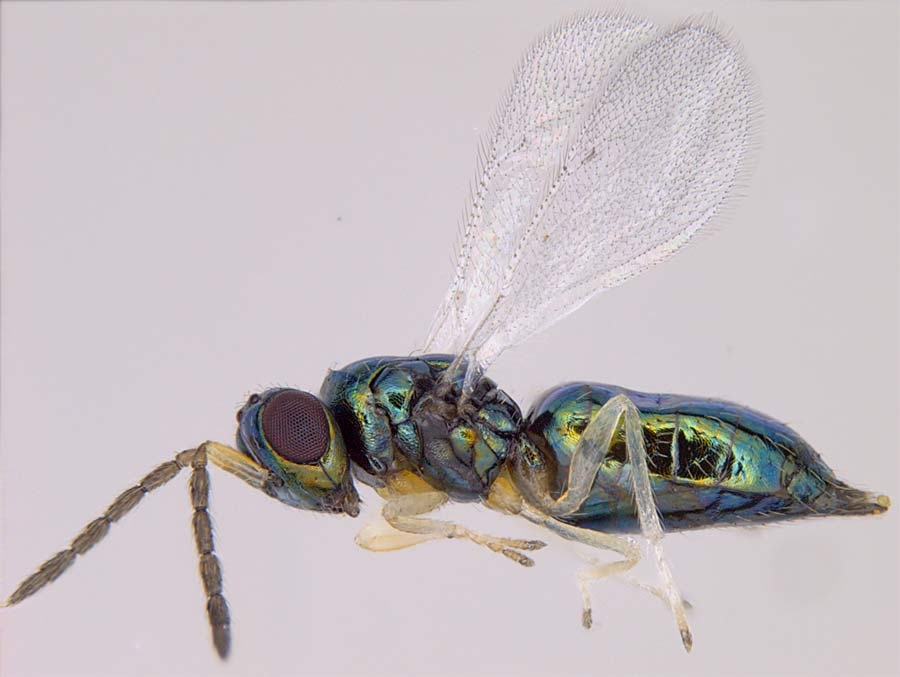 Adult - lateral view Adult - lateral view
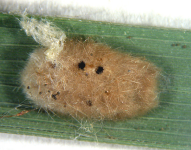 Rice yellow stem borer egg mass with emergence holes of T. schoenobii
Rice yellow stem borer egg mass with emergence holes of T. schoenobii
Host range
Tetrastichus schoenobii has been recorded as a primary parasitoid of shoot borers of rice and sugarcane, particularly Scirpophaga incertulas, S. excerptalis, S. innotata, Chilo suppressalis, C. infuscatellus (all Pyralidae), and also Sesamia inferens and Spodoptera mauritia (Noctuidae). Trichomalopsis apanteloctena (Crawford) (=Eupteromalus parnarae Gahan) is a
hyperparasitoid of T. schoenobii.
Biology and ecology
Tetrastichus schoenobii is a predator-cum-parasitoid of rice yellow stem borer eggs
because it attacks several eggs during its development. Several wasps may parasitize an egg mass of stem borers. Each female parasitoid lays one egg in each stem borer egg. It can produce 10 to 60 offspring. Egg incubation takes 1 to 2 days. Larval development takes place inside the egg host. Once the egg is consumed, the larval parasite moves out from the egg and locates another egg host for its development. Several reports suggest that T. schoenobii is the most important egg parasitoid of rice yellow stem borer along with scelionids (Telenomus spp.) with parasitism levels going over 90% in some instances.
References
- Ahangama, D. and Gilstrap, F.E. 1987. Egg parasites of Scirpophaga incertulas (Walker) in Sri Lanka. International Rice Research Newsletter, 12(4): 43-44.
- Bhuiya, B.A. and Sufian, M.A. 1986. Biological studies of Tetrastichus schoenobii Ferriere (Hymenoptera: Tetrastichidae), an egg parasite of yellow rice borer, Scirpophaga incertulas Walker. Bangladesh Journal of Zoology, 14(1): 75-82.
- Chandramohan, N. and Chelliah, S. 1990. Natural enemies of rice yellow stemborer, Scirpophaga incertulas (W.) and its relationship with weather elements. Journal of Biological Control, 4(2): 89-92.
- Ferriere, C. 1931. New chalcid egg-parasites from South Asia. Bulletin of Entomological Research, 22(2): 279-295.
- Gupta, M., Chaugule, R.A. and Pawar, A.D. 1985. Role of Tetrastichus schoenobii Ferriere in controlling yellow rice borer, Scirpophaga incertulas Wlk. Plant Protection Bulletin, Faridabad 37(2): 7-12.
|